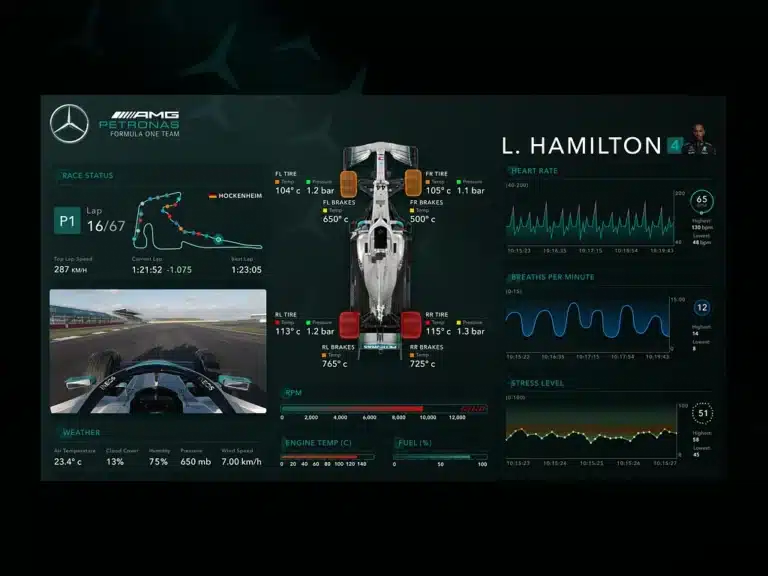Managing desktops across a company can feel like juggling flaming torches. IT teams often face challenges with updates, security threats, and providing access to remote workers. It’s overwhelming, costly, and sometimes downright frustrating.
Here’s the positive news: Virtual Desktop Infrastructure (VDI) solutions make all that chaos more manageable. By hosting virtual desktops in centralized environments, businesses can reduce expenses while enhancing adaptability.
This blog will explain what managed VDI solutions are, their features, benefits, and leading options available today. Keep reading—you’ll soon see why this matters!

What Are Managed Virtual Desktop Infrastructure (VDI) Solutions?
Managed Virtual Desktop Infrastructure (VDI) solutions offer a centralized way to provide virtual desktops to users. Instead of relying on individual machines, businesses can host desktop environments within data centers or the cloud.
This setup gives employees access to their workspaces from virtually any device—laptops, tablets, or thin clients—without compromising performance or security. Platforms like Graphon.com make this flexibility possible by delivering applications remotely while maintaining strong performance and secure access.
These services streamline IT infrastructure by overseeing updates, desktop provisioning, and maintenance through virtualization technology. Businesses can reduce hardware expenses while supporting remote work and BYOD policies effectively—especially with help from Greenville MSPs like Cantey Tech who manage deployment and maintenance.
A well-maintained VDI solution makes tech headaches fade away like yesterday’s emails.
Let’s examine the key features that make these solutions such essential tools for business owners.

Key Features of Managed VDI Solutions
Managed VDI solutions offer businesses practical ways to control virtual desktops. They simplify intricate tasks, making IT operations more efficient.
Centralized management
Centralized desktop management simplifies IT infrastructure by bringing all user desktops under one control point. Administrators can adjust settings, update software, and manage virtual machines from a single platform. Partnering with a virtual assistant for lawyers can further streamline administrative tasks, allowing IT teams to focus on core infrastructure management.
This eliminates the need for managing individual devices, saving time and resources. It also reduces downtime since issues can be identified and resolved quickly without physically accessing endpoints.
Virtualization technology allows businesses to create centralized desktop environments that enhance organization-wide consistency. For example, updates roll out uniformly across all users, avoiding compatibility problems or version mismatches.
IT teams gain improved visibility into their systems while maintaining strict control over user access and data security, especially when working with reliable managed IT partners.
Enhanced security and compliance
Managed Virtual Desktop Infrastructure provides enhanced server protection by maintaining sensitive data within the datacenter. This minimizes risks associated with lost or stolen devices as no information is stored locally on endpoints.
Equally critical to data protection is ensuring uninterrupted, high-quality power for the underlying infrastructure. For many virtualised and high-density server rooms, a three-phase UPS delivers the scalability and voltage stability required to keep hosts and storage systems online during outages; options in 3/3 and 3/1 configurations let teams match redundancy to load.
Properly sized three-phase systems also reduce transfer shocks and make maintenance windows safer for live VDI environments. Learn more about practical deployment choices at 3-Phase UPS.
Businesses achieve greater control over access, ensuring only authorized users can access specific files or tools.
Adhering to industry standards becomes more manageable through centralized desktop management. IT teams can implement policies such as encryption and multi-factor authentication with ease.
Updates occur throughout the virtual environment instantaneously, decreasing vulnerabilities from outdated systems.
Scalability and flexibility
Expanding businesses demand adaptable IT infrastructure. Virtual desktop infrastructure meets this need by allowing companies to modify resources like virtual machines and storage based on real-time needs.
It prevents overprovisioning, saving costs while maintaining performance.
“Flexibility in IT systems allows teams to work smarter, not harder.”
These solutions also adjust easily to remote work requirements. Employees can access desktops from any device, maintaining smooth operations across locations. This adaptability supports growth without confining you to rigid hardware investments.
Multi-device accessibility
Employees can access virtual desktops from laptops, tablets, or even smartphones. Managed Virtual Desktop Infrastructure (VDI) solutions enable this by synchronizing data and applications across devices.
This adaptability supports both in-office teams and remote workers without reducing performance.
A secure connection ensures sensitive information remains protected regardless of the device used. IT teams can manage permissions centrally while users switch between tools with ease.
With growing reliance on mobile work environments, multi-device compatibility keeps businesses operating effectively.

Types of VDI Deployments
Businesses can pick from different setups based on their needs and goals. Each option offers distinct benefits for specific workflows.
Persistent VDI
Users in persistent VDI setups receive their own dedicated virtual desktops. These desktops retain changes like installed apps or personalized settings after a session ends. Employees can log back into the same desktop with everything exactly how they left it.
This approach resembles physical workstations but operates through virtualization technology. It works well for roles requiring consistency, such as developers or designers. IT teams benefit from centralized management while users enjoy consistent environments across devices.
Persistent VDI ensures stability without affecting usability or performance.
Nonpersistent VDI
Unlike persistent VDI, nonpersistent VDI resets after each session. It establishes temporary virtual desktops for users rather than preserving changes or personal settings.
Businesses often implement this model in task-based environments like call centers or training facilities. IT teams dedicate less effort managing these desktops because updates are distributed centrally.
This approach improves server security and minimizes the risk of data breaches since no user-specific information is stored long-term.

Benefits of Managed VDI Solutions
Managed VDI solutions simplify the management of business IT systems. They also improve the experience and efficiency of remote work for teams.
Cost efficiency
Switching to a virtual desktop infrastructure reduces the requirement for costly hardware updates. Businesses can operate thin clients or older devices while maintaining consistent performance.
This decreases capital expenditure and avoids the need for frequent device replacements.
Centralized desktop management lowers IT maintenance costs. Fewer on-site visits are required as teams resolve issues from any location. Cloud-based hosting also changes expenses to consistent monthly fees, simplifying budgeting.
Enhanced remote work capabilities make operations more efficient and dependable.
Improved remote work capabilities
Managed Virtual Desktop Infrastructure solutions make remote work straightforward and effective. Employees can access their virtual desktops from any device, whether at home or on the road.
This flexibility helps businesses maintain productivity regardless of location.
Centralized desktop environments also allow IT teams to update software and resolve issues promptly. Businesses save time while employees avoid interruptions to their workflow. Security remains strong as data never leaves the secure zones of cloud servers or datacenters.
Simplified IT operations
Centralized desktop management reduces the hassle of managing multiple systems. IT teams can manage updates, patches, and maintenance from one location instead of addressing every device individually.
Server-based desktop virtualization decreases troubleshooting time. It enables quick resolutions for user issues without complex manual steps. This conserves resources and maintains workflows efficiently.

Top Managed VDI Solutions in the Market
Businesses have plenty of solid choices for managed VDI services. Each option brings distinct tools to fit different IT needs.
VMware Horizon
VMware Horizon simplifies desktop virtualization through centralized desktop management. It provides virtual desktops and apps directly to users from a secure data center environment.
IT teams can effectively handle user desktop provisioning while maintaining strong server security standards. This solution is excellent for organizations managing large-scale remote work setups or needing enhanced endpoint management.
Companies benefit from its flexibility, supporting multiple devices like thin clients, PCs, or mobile devices without sacrificing performance. Administrators can quickly adjust resources as workforce demands change.
With advanced features such as multi-cloud support and automated virtual machine provisioning, VMware Horizon aids in optimizing IT infrastructure tasks while improving overall productivity.
Citrix Virtual Apps and Desktops
Citrix Virtual Apps and Desktops helps businesses manage virtual desktop environments effectively. It allows employees to access their work applications and desktops from anywhere, using any device.
This solution uses virtualization technology to host desktops and applications securely in a centralized datacenter or the cloud.
This platform supports access across various devices while focusing on server security and compliance requirements. It simplifies IT management through centralized control over user desktop virtualization and infrastructure management tasks.
Businesses can adjust resources based on demand without interfering with daily operations.
Azure Virtual Desktop
Azure Virtual Desktop simplifies desktop virtualization by offering a fully managed cloud-based solution. It provides centralized desktop management, allowing businesses to host virtual desktops securely in Microsoft Azure’s data centers.
Users can access their workspaces from various devices, including laptops and tablets, improving flexibility for remote teams.
This service works with Microsoft 365 and supports multi-session Windows 10 or Windows 11 environments. Businesses reduce infrastructure costs by eliminating the need for physical servers while benefiting from advanced server security features.
IT managers also gain simplified tools for user desktop provisioning and endpoint management through Azure’s easy-to-use interface.
Amazon WorkSpaces
Amazon WorkSpaces offers a secure, fully managed desktop virtualization service. It provides virtual desktops hosted on the cloud, allowing employees to access their work environments from anywhere.
Users can run Windows or Linux desktops without worrying about maintenance and updates. This solution helps simplify IT management while providing centralized control over your organization’s data.
IT administrators gain improved security with encrypted storage and network traffic. Multi-device support ensures compatibility across laptops, tablets, and smartphones, making it suitable for remote workforces.
Businesses also benefit from its pricing model—pay only for what you use rather than investing in costly hardware upfront.

Conclusion
Managed VDI solutions simplify how businesses handle desktops. They provide adaptability, protection, and easier administration from a centralized platform. These tools ensure remote work remains seamless and productive.
By embracing them, companies save time and reduce expenses. It’s a practical choice for current IT requirements.
- 3shares
- Facebook0
- Pinterest0
- Twitter3
- Reddit0





